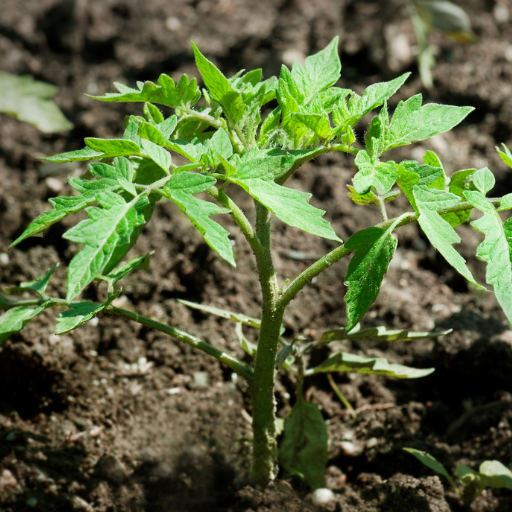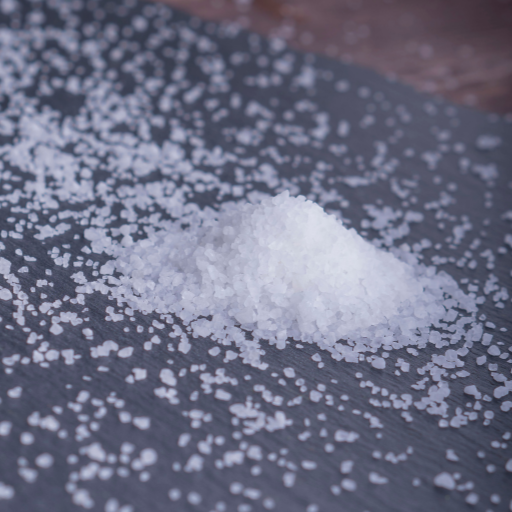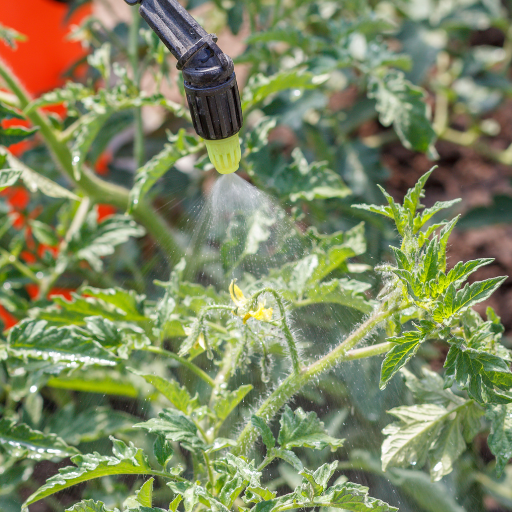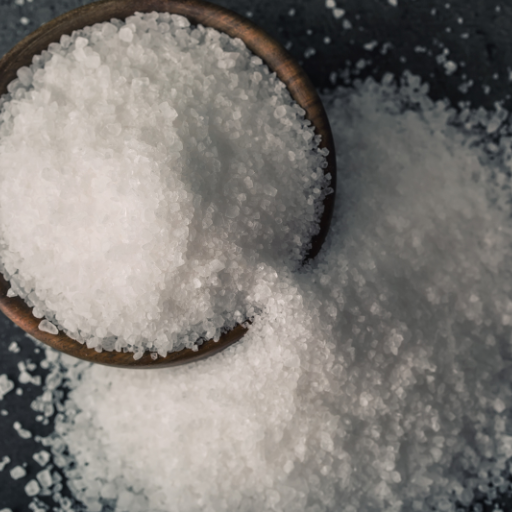Magnesium sulfate, or Epsom salt, is widely promoted as a beneficial vitamin for tomato plants. This assumption is based on the fact that magnesium and sulfur are both vital to the physiological processes of plants. Because it is essential for photosynthesis, magnesium is present in chlorophyll; however, amino acids, enzymes and vitamins cannot be synthesized without sulphur. Epsom salt fanatics argue that it restores lack of magnesium, promotes growth while increasing crop yield in tomatoes. Nevertheless, there are conflicting opinions about its effectiveness among scientists who look into different soil types and needs from plants. This article explores whether Epsom salt has any potential advantages or disadvantages when used on tomato plants by looking at anecdotal evidence and scientific research. By the time readers finish this paper they should have a well-rounded knowledge of whether adding Epsom salts into their tomato plant care program is an appropriate selection.
Understanding Epsom Salt and Its Components
The Epsom salt is composed of magnesium and sulphur, both of which are essential nutrients for plants. Magnesium found in the middle of the chlorophyll molecule is important for photosynthesis and it helps plants to take up phosphorus, other key nutrient. Sulfur, a component of some amino acids and vitamins, is necessary for protein synthesis and enzyme function. When dissolved in water, epsom salts break down to form magnesium and sulfate ions making it available easily to plants. Despite possible improvements in growth and fruit production that are supported by anecdotal evidence; scientific researches have given very different results basically due to the soil’s existing nutrient levels. The effectiveness of Epsom Salt on tomato plants will therefore depend on the type of soil it is used on as well as pre-existing deficiencies.
Epsom Salt Composition
Epsom salt has a chemical name called magnesium sulfate heptahydrate (MgSO₄·7H₂O) which has a molecular formula MgSO₄·7H₂O. It is white crystal substance that contains about 10% magnesium and 13% sulfur by mass. This magnesium actually performs an important role in chlorophyll formation since it enables central chlorophyll molecule to trap solar energy. Likewise, without sulfur which assists in producing cysteine or methionine; their corresponding amino acids, they play a fundamental role in building plant proteins or enzymes (essential components). Once it sinks into the ground, Epsom salt turns into free ions of Magnesium (Mg²⁺) and Sulfate(SO₄²⁻) being quickly taken up by plant roots because they dissolve so easily when put into water. Such rapid absorption helps carry out immediate physiological functions such as mobilization of nutrients including stress tolerance meaning epsom salt can mitigate lack of magnesium among other deficits associated with poor plant health and growth. However, its use needs to be done cautiously based on soil testing to determine the levels of nutrients available so as to avoid nutrient imbalance.
Soil Chemical Reactions
When Epsom salt is added to soils, it dissolves to release magnesium ions (Mg²⁺) and sulfate ions (SO₄²⁻). These ions interact with the soil matrix and other nutrients present. Magnesium ions are very useful in cation exchange processes because they take place between them and other cations such as calcium (Ca²⁺) and potassium(K⁺) on the colloid surfaces of soil making them accessible for plant uptake. Also, sulphate ions facilitate availability of sulphur which is necessary for protein synthesis and plant enzyme function. Moreover, magnesium sulfate dissociation may affect the pH level of soils since this can make it more conducive towards nutrient absorption. Nevertheless, excess application should not lead to imbalances but rather its regulation ought to follow exhaustive analysis of soil samples.
Nutritional Needs of Tomato Plants

Tomato plants require a specific balance of nutrients to achieve the best growth and fruit production. The major macronutrients include nitrogen (N), phosphorus (P) and potassium (K) which are crucial for various processes in plant development. Nitrogen is important for leaf and stem development, phosphorus helps in root growth and flower formation while potassium supports general health of the plant as well as disease resistance. Additionally, there are secondary nutrients such as calcium that prevents blossom end rot in case the soil lacks enough amounts necessary for photosynthesis. Micronutrients like iron, manganese and zinc are also very important in much smaller amounts needed for enzyme actions and chlorophyll production. Therefore, it is necessary to carry out regular soil testing and appropriate fertilizer application strategies should be used with both organic and inorganic sources to maintain good soil health and productivity.
Essential Nutrients for Growth
Nitrogen is essential for vegetative growth as it is an integral part of amino acids and proteins; Phosphorous facilitates energy transfer within the cells since it takes part in ATP synthesis through photolysis thereby promoting root development leading to flowering; Water regulation enzymatic activation involved in overall hardiness of plants depends on availability of potassium ions; Ca or Calcium strengthens cell walls thus protecting against diseases like blossom end rot; Finally Mg or Magnesium which is critical to photosynthesis being central component required during chlorophyll formation; Sulfur occurs as component parts of certain amino acids plus vitamins while many others form what are called micronutrients such as Fe-Ferrous Mn- Manganese Zn-Zinc just to mention but a few whose existence cannot be ignored due their distinct roles catalyzing various enzymes providing building blocks found only within forming molecules responsible green coloration leaves or muscles used animals performing respiration process along numerous other metabolic reactions occurring cells including synthesis.
Common Deficiencies in Tomato Plants
The most common nutrient deficiencies in tomatoes can hinder the growth and yield of the crop. Nitrogen deficiency is one of these that results to pale green or yellow leaves starting from the lower part of the plant. This nitrogen scarcity reduces overall plant growth and lowers fruit production. Phosphorus deficiency is another major problem, which causes stunted plants with dark green or purplish foliage as well as poor flowering. Similarly, low potassium levels result in scorching along leaf margins on older leaves while fruits are characterized by poor quality and are vulnerable under drought. These can usually be addressed through soil testing followed by applying appropriate fertilizers to restore nutritional balance.
Symptoms of Nutrient Deficiency
If left untreated, for instance, nitrogen deficiency symptoms appear first on older leaves turning yellow from their tips until they become completely yellow then fall off. According to research studies, normal nitrogen concentration values in leaves should range between 3.5% and 5%. On the other hand, phosphorous lack can manifest itself through purple appearance especially found at undersides diminished root development delaying ripening process. Optimum leaf phosphorus content varies anywhere from 0.2% up to 0.5%. Potassium shortage typically leads to scorching and curling within leaf margins initiating with old ones together with poor fruits quality; Therefore enough K levels present tomato tissues lie among 3-5 percent Proper identification of these symptoms must be carried out coupled soil tissue diagnosis so that right measures could be taken.
Role of Magnesium in Plant Health

Magnesium is a key nutrient for plant health, whose primary function is the central atom in the chlorophyll molecule, which makes photosynthesis possible. It helps capture light energy that is needed in synthesizing sugars, thus enabling plants to grow and generate power. Additionally, magnesium plays an important role in enzyme activation and nutrient uptake, making it crucial for overall metabolic processes within the plant. A symptom known as interveinal chlorosis occurs during deficiency when leaves appear yellow between the veins while still being green or alternatively older leaves may turn brown and drop off completely at worse stages. Therefore soil amendments or foliar sprays should be done to ensure sufficient magnesium levels for healthy plant growth.
Photosynthesis & Magnesium’s Role
The presence of magnesium at the core of the chlorophyll molecule allows it to capture solar energy efficiently hence its critical role in photosynthesis. It harnesses this captured energy to convert light-dependent reactions into chemical energy as bonded compounds form. These molecules absorb light specifically blue wavelength and red spectrum that are essential in producing ATP plus NADPH; molecules which drives Calvin cycle. This pathway requires RuBisCO enzyme facilitated by magnesium so that carbon dioxide can be fixed into organic substances. The optimum concentration of magnesium found in plant tissues normally falls between 0.15-0.50%. As such maintaining these levels becomes imperative as they determine not just photosynthetic efficiency but overall health and yield of plants themselves. Soil testing and proper fertilizer application practices like magnesium sulfate or dolomitic lime are recommended to address these deficiencies and sustain high rates of photosynthesis.
Chlorophyll Production Implication
The availability of magnesium within the operating system of any given plant influences directly on chlorophyll production. Since it forms the central core of chlorophyll structure, lack of enough magnesium results to fewer synthesis among other molecules involved in it leading to lower amounts produced per unit area.This leads to reduced photosynthetic capacity as well as diminished overall plant’s photosynthetic activities. Soil pH is one of the key parameters controlling magnesium availability with optimum uptake ranging between 6.0-7.0 for magnesium. It’s also necessary to ensure that soil magnesium concentrations are within 50-120 ppm range to achieve sufficient chlorophyll production. Magnesium supplementation at rates of 10–20 pounds per acre through fertilizers like Epsom salt can correct deficiencies and promote optimal chlorophyll synthesis. Maintaining nutrient levels through regular soil and tissue testing minimizes challenges arising from imbalanced magnesium.
Deficiency Symptoms on Tomato Plants
Magnesium deficiency symptoms in tomato plants are easily visible on older leaves. First sign of this problem is interveinal chlorosis, which results from yellowing of leaf tissues while veins retain their green coloration. Sometimes these leaves may have necrotic spots or develop purplish or bronze discoloration due to an advanced stage of deficiency symptoms. In addition, plants become stunted with small fruit sizes, lower yields and poor growth when they lack enough magnesium since it is essential for photosynthesis and energy transfering process in them.
Dealing with lack of magnesium is a complex problem. Soil should be analyzed to find out the current levels of magnesium and it should ideally be maintained between 50-120ppm. Also, soil pH needs to be kept within the range of 6.0 and 7.0 for optimum release of magnesium. The remedies may involve adding magnesium sulfate (Epsom salts) at rates of between 10-20 pounds per acre depending on the severity of the situation. Dolomite lime can also increase soil’s magnesium content and alter its acidity level. Such maintenance would ensure an adequate amount of chemicals in a soil thus preventing reappearance of symptoms that may suggest deficiency syndromes as such could recur if not prevented through regular testing from both soil and tissue analysis which may prevent reuse through regular monitoring are primarily important in maintaining suitable nutrient levels within it
Benefits of Epsom Salt for Tomato Plants

Epsom salt, which is magnesium sulfate in chemical terms, has numerous advantages when used on tomato plants. Its application can effectively correct magnesium deficiencies that enhance chlorophyll production required for photosynthesis. The sulphur found in Epsom Salt also has its role to play on protein synthesis and overall plant health. Epsom salt applied as soil amendment or foliar spray stimulates fast growth, enhances the development of the plant’s vascular system; and can lead to larger fruits and increased yields. Besides this, it optimizes plant performance through facilitating the uptake of other essential nutrients such as nitrogen and phosphorus thereby improving its resistance to various stressors. Therefore using Epsom salt regularly and in the right proportion can greatly contribute towards an improved health status and productivity of the tomato plants.
Using Epsom Salt to Enhance Nutrient Uptake
By increasing levels of available magnesium and sulfur, application of Epsom salt can boost nutrient uptake by tomato plants. Magnesium is a central component of chlorophyll, a molecule responsible for photosynthesis that converts light energy into stored chemical energy by the plant. This provides the energy necessary for absorption and transport of other nutrients such as nitrogen and phosphorous among others involved in normal growth processes.Amino acids are made up of proteins whose building blocks are amino acids produced from sulfur found in these salts (Epsom salts). This helps promote efficient nutrient penetration by ensuring ready availability of these crucial substances; a factor that makes uptake faster thus leading to healthier plants with good growth rate, high yield output and better resistance against environmental stresses.
Increasing Fruit Quality with Epsom Salt
Epsom salt is beneficial in enhancing fruit quality in tomatoes since it provides essential minerals important for optimum plant health. Magnesium is vital for chlorophyll formation hence helps in photosynthesis; thus increasing fruit size through improved energy supply. Sulphur contained in epsom salts contributes to amino acid synthesis which is necessary for protein formation and overall plant strength. These nutrients combined contribute to increased fruit size, better texture and improved taste hence higher quality yields. For this reason, application of the salt through soil or as foliar spray can greatly improve the quality of tomato harvest.
Maintaining Plant Health Using Epsom Salt
Epsom salt has a major role to play in enhancing overall plant health by treating common nutrient deficiencies as well as improving absorption of essential minerals. It also helps with root growth by promoting cell division and healthier roots that ensure adequate water and nutrient supply to plants. This promotes even faster seed germination rates even resulting in healthier seedlings. A foliar spray means that it can be used immediately on nutrient-stressed plants thereby giving them an instant energy boost leading to greater vigor against pests and diseases. The use ensures that plants grow under optimal conditions thus increasing foliage colouring, firming stems, and improving their health status respectively.
Application Methods for Epsom Salt

Epsom salt can be used in different ways to improve plant health and yield. Soil application, for example, is done by mixing Epsom salt with the soil at planting or as a top-dressing. Typically, one tablespoon of Epsom salt should be sprinkled around the base of the plant for every foot of its height and then watered well.
Another method is foliar spraying which ensures immediate nutrient uptake. For rapid absorption through the leaves, dissolve one tablespoon of Epsom salt in a gallon of water and apply it directly onto the foliage. This practice has greater advantages when plants are growing rapidly or when they show specific deficiencies.
Lastly, soaking seeds or young plants in an Epsom salt solution improves germination and early root development. To prepare this solution, dissolve one tablespoon of Epsom salts in a gallon of water and soak seeds or wet seedlings with it from time to time.
Proper application based on needs of plants coupled with growth stages goes a long way in maximizing positive effects associated with using Epsom salts hence better plant health/production.
Soil Drench Technique
Soil drench technique is a systematic way that is used to administer nutrients directly towards the root zone ensuring efficient absorption thus an improved plant health. To implement this technique, dissolve one tablespoonfuls of Epsom salts in a gallon measure full of water. The solution must be poured uniformly around the base until it penetrates into soil reaching the roots successfully; this should be done once a month during growing season to keep proper levels of magnesium, sulfur which are very important minerals needed for chlorophyll production and enzyme function. In order to achieve optimal outcomes these technical specifications are vital:
- Concentration: One tablespoons fulls per gallon measures full
- Application Frequency: Once per four weeks each active growth period
- Water Volume: It should cover only up-to roots without saturating entire soil hence usually one gallon per plant or square foot for large areas
Foliar Spray Method
Foliar spray method is used to give nutrients directly to the foliage of a plant so as to allow for easy absorption and immediate utilization. To prepare the Epsom salt foliar spray, dissolve one tablespoonfuls of Epsom salts in a single gallon measure full of water. This solution can be applied via an ultra-fine mist sprayer so that each leaf receives even coverage; this operation should be performed early in the morning or late in the evening when evaporation rates are low and leaves are not exposed to sunlight. Thus, avoid spraying during midday hours when it is hottest or during damp weather conditions as these may lead to spoilage of leaves or hinder efficiency in absorbing nutrients. There are several technical parameters for effective foliar application:
- Concentration: One tablespoons fulls per gallon measures full
- Application Frequency: After every two weeks within growing seasons which will keep up on level of magnesium and sulfur
- Spraying Technique: Uniformly applying droplets on both sides of all leaves with no wastage off liquid.
- Timing: Early morning and late evening are supposed to be applied here, ensuring high absorption levels without straining the plants.
Dosage Recommendations
The amount of Epsom salt required for plant health depends on the species and specific environmental conditions. As a general rule, Epsom salt should be applied as a soil amendment at the rate of one tablespoon per foot of plant height mixed around the base gently into the soil. In relation to container plants, it is advised that you dissolve two tablespoons of Epsom salts in a gallon of water and then use this solution to water your plants every month regularly. It is important to monitor plant response when incorporating Epsom salts into your normal fertilization routine so that dosages can be adjusted appropriately in order to avoid nutrient imbalances. To apply the correct amounts with accuracy, top dressing or broadcast fertilization methods must consider actual magnesium and sulfur contents which should be done once in a while according to some horticulture sources. These dosage recommendations correlate with those outlined by reputable gardening literature sources among them all these horticulture ones we have discussed before.
Potential Risks and Considerations

Epsom salt is advantageous to plant health, however, it is important to bear in mind and consider the risks associated with it. Moreover, too much use can lead to soil salinity and, as a result, hinder root development by scorching leaves and blockage of the nutrient uptake process. Moreover, high magnesium levels result in an imbalance of nutrients that exist within the soils leading calcium and potassium deficiencies among others. It is also significant to take note that Epsom salt cannot replace a complete fertilizer program; instead it should be seen as a supplement rather than the sole source of nutrients. Therefore, regular soil testing and careful monitoring of plant health are recommended so as to avoid detrimental effects and ensure safe and effective uses when incorporated into wider horticultural strategies.
Consequences of Over-Application
Excessive application of Epsom salt can have various negative implications on soil fertility as well as plants. Firstly, over time excessive accumulation of salts in the soil creates hypertonicity in water thus triggering dehydration among plants making them unable to access water hence resulting into root stress. This condition is often referred to as leaf scorch where some sections or all leaf margins dries up becoming brownish in coloration. On top of this, too much use leads to nutritional imbalances especially on calcium and potassium levels which may lead to stunted growth thereby increasing susceptibility towards diseases.
Technical parameters indicate that the optimal magnesium concentration for most garden plants ranges from 40 to 120 ppm (parts per million), while detrimental effects are observed when concentrations exceed 200 ppm. Alterations in these levels can influence soil pH; desirable pH range for most crops falls between 6.0-7.0 but continuous excess supply of MgSO4 can make this pH decline causing acidity increase within soil types affected. To prevent such problems one should follow applied rates given and frequently test their soils thus knowing what should be done whenever there are changes in nutrient concentration or pH. These recommendations come from researches in agronomy and horticultural best practice.
Soil Testing Prior to Use
Soil testing is an important process that should be conducted before Epsom salt is used in any horticultural application. Initially, a soil test should analyze key attributes like pH, magnesium (Mg), and calcium (Ca). For most garden plants standard soil tests reveal how much magnesium is present currently which lies between 40-120ppm as the appropriate measure. Where magnesium levels are already around or above 200 ppm, they should not add more Epsom salts to avoid poisoning.
Beside this, one should check the soil pH since it typically ranges between 6.0 – 7.0 for many crops. If those figures deviate from normal range particularly towards acidic side then there might be other amendments needed apart from MgSO4. Ordinary soil examinations also assess the calcium-potassium ratio; optimal Ca content varies from 1500-3000 ppm while K must stay within 100-200 ppm limits. This way undue use will be avoided by monitoring nutrients early enough so as to target and prevent over-supply effects.
Frequently Asked Questions (FAQs)
Q: Will adding Epsom salt help my tomato plants grow better?
A: Yes, adding Epsom salt can help tomato plants by providing essential nutrients like magnesium and sulfur. These nutrients are crucial for their growth and can help produce healthier and more robust plants.
Q: How do I apply Epsom salt in the garden to assist my tomato plants?
A: You can apply Epsom salt in the garden by either mixing it into the soil or dissolving it in water and using a spray bottle to mist the leaves on tomato plants. Both methods can be effective in delivering nutrients directly to the plants.
Q: How often should I add Epsom salt to the soil for my tomato plants?
A: Typically, gardeners should apply Epsom salt to their plants every two weeks throughout the growing season. This can help ensure the tomato plants receive a consistent supply of magnesium and sulfur.
Q: Can Epsom salt help prevent magnesium deficiency in tomato plants?
A: Yes, Epsom salt can help prevent magnesium deficiency in tomato plants. Magnesium is an essential nutrient that plays a crucial role in photosynthesis, and an adequate supply can help in the overall health and productivity of the plants.
Q: Is it safe to use Epsom salt as a tomato fertilizer?
A: Yes, it is safe to use Epsom salt as a tomato fertilizer. Epsom salt is a simple and natural way to supplement traditional fertilizers for tomatoes, providing additional magnesium and sulfur that support plant growth and fruit production.
Q: Can Epsom salt also help other garden plants like tomatoes?
A: Epsom salt also helps other garden plants like tomatoes and peppers. These plants benefit from the added magnesium, which is essential for their development and fruit production.
Q: What is the best way to dilute Epsom salt for use in a vegetable garden?
A: To dilute Epsom salt for use in a vegetable garden, dissolve about one tablespoon of Epsom salt in a gallon of water. Use this solution to water your plants or apply it with a spray bottle directly to the leaves, ensuring they get the nutrients they need.
Q: How can I determine if my tomato plants need more magnesium or sulfur?
A: A soil test kit can help you determine if your tomato plants need more magnesium or sulfur. By testing the soil, you can identify any deficiencies and adjust your gardening practices accordingly to provide the necessary nutrients.
Q: Are there any signs that indicate my tomato plants might benefit from Epsom salt?
A: Signs that your tomato plants might benefit from Epsom salt include yellowing leaves and stunted growth. These can be indicators of a magnesium deficiency, and adding Epsom salt to the soil or using an Epsom salt solution can help improve the health of your plants.






